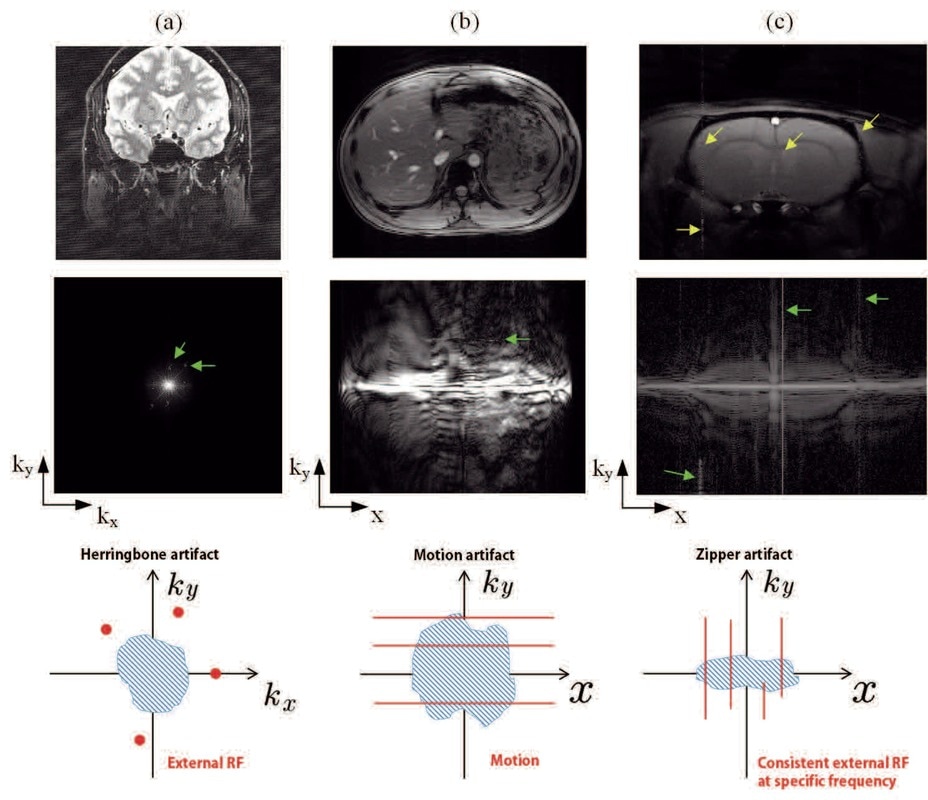MR Artifact Removal using Robust ALOHA
|
Purpose: MRI artifacts are originated from various sources including instability of an MR system, patient motion, inhomogeneities of gradient elds, etc. Such MRI artifacts are usually considered as irreversible, so additional artifact-free scan or navigator scan is necessary. To overcome these limitations, this paper proposes a novel compressed sensing-based approach for removal of various MRI artifacts.
Theory: Recently, the annihilating lter based low-rank Hankel matrix (ALOHA) approach was proposed. ALOHA exploits the fundamental duality between the low-rankness of weighted Hankel structured matrix and the sparsity of signal in a transform domain. Because MR artifacts usually appeared as sparse k-space components, the low-rank Hankel matrix from underlying artifact-free k-space data can be exploited to decompose the sparse outliers. Methods: The sparse + low-rank decomposition framework using Hankel matrix was proposed for removal of MRI artifacts. Alternating direction method of multipliers (ADMM) algorithm was employed for the minimization of associated cost function with the initialized matrices from a factorization-based matrix completion. Results: Experimental results demonstrated that the proposed algorithm can correct MR artifacts including herringbone (crisscross), motion, and zipper artifacts without image distortion. Conclusion: The proposed method may be a robust correction solution for various MRI artifacts that can be represented as sparse outliers. |

